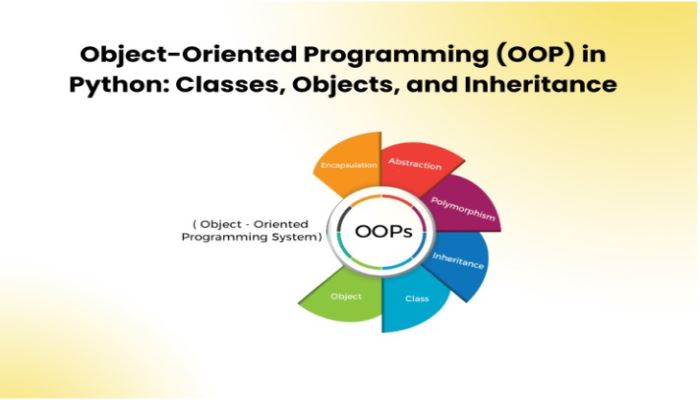Object-Oriented Programming (OOP) is a Programming paradigm that revolves around the concept of objects, which are instances of classes. Python, being an object-oriented language, provides robust support for OOP principles, allowing developers to create modular, reusable, and scalable code. This blog post provides an overview of OOP in Python, focusing on classes, objects, and inheritance, and their relevance in Python Programming.
Classes and Objects in Python
In Python, a class is a blueprint for creating objects. It defines the properties (attributes) and behaviors (methods) that all objects of that class will have. To create a class in Python, you use the class keyword followed by the class name and a colon. For example:
class MyClass:
# Class attributes and methods go here
Once a class is defined, you can create objects (instances) of that class using the class name followed by parentheses. For example:
my_object = MyClass()
Objects are instances of a class, and each object has its own unique set of attributes and methods, which are defined by the class. You can access an object’s attributes and methods using dot notation. For example:
print(my_object.my_attribute) # Accessing an attribute
my_object.my_method() # Calling a method
Inheritance in Python
Inheritance is a key feature of OOP that allows a class (subclass) to inherit attributes and methods from another class (superclass). This promotes code reuse and enables the creation of a hierarchy of classes with increasing levels of specialization. In Python, you can create a subclass by specifying the superclass in parentheses after the subclass name in the class definition. For example:
class ChildClass(ParentClass):
# Class attributes and methods go here
The subclass inherits all attributes and methods from the superclass and can also define its own attributes and methods. When an attribute or method is called on an instance of the subclass, Python first looks for it in the subclass. If it’s not found, Python then looks for it in the superclass.
Relevance in Python Programming
Understanding classes, objects, and inheritance is crucial for effective Python programming, especially when working on complex projects that require a modular and scalable codebase. By organizing code into classes and objects, developers can create reusable components that are easier to maintain and extend. Inheritance allows developers to create specialized classes that inherit common functionality from a superclass, reducing code duplication and promoting a more efficient design.
Moreover, OOP in Python aligns with the language’s philosophy of readability and simplicity, making it easier for developers to collaborate on projects and understand each other’s code. By following OOP principles, Python programmers can write code that is more modular, maintainable, and adaptable to changing requirements.
Encapsulation and Polymorphism in Python OOP
Encapsulation and polymorphism are key ideas in Python’s object-oriented programming (OOP) framework, in addition to classes, objects, and inheritance. These ideas further improve the modularity and flexibility of Python programs.
Encapsulation
The idea of encapsulation is to combine methods (functions) that manipulate data with data (attributes) into a single entity known as a class. Encapsulation in Python is accomplished using the underscore (_) pattern to define attributes as private or protected. Protected properties are meant for internal usage only inside the class and its subclasses, while private attributes should not be accessed directly from outside the class.
Polymorphism
Polymorphism is the ability of different objects to respond to the same message (method call) in different ways. In Python, polymorphism is achieved through method overriding and method overloading. Method overriding occurs when a subclass provides a specific implementation of a method that is already defined in its superclass. This allows different subclasses to provide their own unique implementation of a method, which is called when the method is invoked on an object of that subclass.
Conclusion
Object-Oriented Programming (OOP) is a powerful paradigm that allows developers to create modular, reusable, and scalable code in Python. By defining classes and objects, developers can encapsulate data and functionality into logical units, making the code more organized and easier to understand. Inheritance further enhances code reuse by allowing classes to inherit attributes and methods from other classes, promoting a hierarchical structure that reflects real-world relationships.

